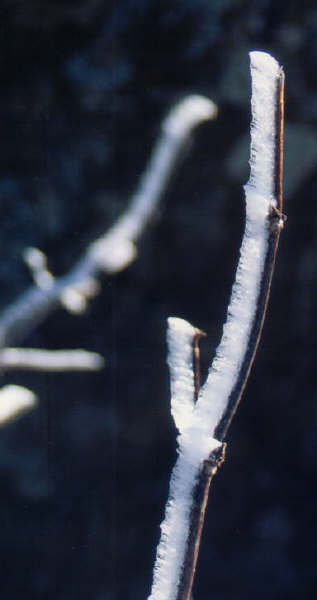
Tips for winter deck care from Washington, DC / Northern Virginia area painting and deck staining contractor.
Early in the morning, you peak out the window to behold a winter wonderland. Your front lawn is a pristine sea of sparkling white. Your sidewalk is a pristine sea of sparkling white. Your back deck is a pristine sea of sparkling white….
Wait a minute: Is that okay?
Without protection, decks take a beating from the elements. Heat and cold, sun and rain, will all weather your deck at an accelerated rate. All four seasons bring unique challenges to exposed wood: summer brings heat and sun, spring brings excessive rain and drastic temperature changes, and fall brings the tannins of all the fallen leaves. Winter brings frosty cold – and with it, the great array of cold-weather precipitation: snow, ice, and sleet.
Of these, ice rime is the only one that you really need to worry about. Snow and sleet will add moisture to the deck, and cold temperatures will take their toll, but nothing acute will go wrong during a snowstorm, no matter how many inches of snow you get. Decks are very strong, and can survive even a serious blizzard. Ice rime is a different creature, however. Without proper finish to the wood, a solid layer of ice can work its way into cracks and pores in the wood, and the expansion and contraction that comes with freezing and thawing can lead to splintering. A good deck sealing job in the fall can go a long way to protect against this situation. If sealing or resealing your deck is a job that you put off for the spring, however, and you look out your window and want to clear a layer of ice from your deck, (or if you would like to be able to safely traverse it), you should follow these tips:
1. Do not chop ice with a shovel; the blade of the shovel can damage the wood
2. Melt the ice with rock salt, calcium chloride, or an environmentally friendly alternative
3. Shovel any snow, slush, or other wintry debris with a plastic shovel, using strokes that move along the boards, not cutting across them (the edge of the shovel may catch on the edges of the boards and damage them)
Generally speaking, unless you get a large tree trunk coming down, a single winter weather event will not be sufficient to damage your deck, so if you want to leave it as a pristine winter wonderland, go ahead. It is the cumulative effect of all four seasons that wears out a deck that hasn’t been properly stained and sealed. If this is something you find yourself worrying about this winter, why not consider staining it when the weather gets better in the spring? It might do wonders for your deck’s beauty and durability – and, next winter, for your peace of mind.